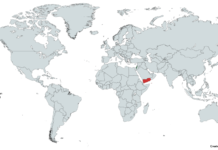Toyota, the world’s leading automaker, has faced a major disruption as all 28 vehicle assembly lines across its 14 auto parts plants in Japan ground to a halt due to a severe computer system malfunction. The issue pertains to the computer system responsible for managing incoming auto parts, though the exact cause remains shrouded in mystery as investigations are underway. Toyota has emphasized that this glitch doesn’t appear to be the result of a cyberattack, but the nature of the problem has yet to be definitively determined.
The shutdown, which took place yesterday, caught both the industry and investors off-guard. This incident compounds the challenges Toyota and other automakers have faced due to the global shortage of computer chips and other auto components, a predicament that stemmed from pandemic-related restrictions. For Toyota, this shortage had begun to ease, and its domestic production had rebounded by an impressive 29% in the first half of the year.
Toyota’s just-in-time inventory management, which has been a cornerstone of its efficiency and cost-saving strategies, is now showing its vulnerability. The company is known for its ability to maintain low costs by minimizing excess inventory and optimizing supply chains. However, such a tightly woven system leaves little room for error, and supply chain disruptions like this computer malfunction can have significant consequences.
With production slated to resume after a day of downtime, Toyota’s statement of apology acknowledges the inconvenience this unprecedented event has caused. However, the ripple effects of the shutdown extend beyond Toyota’s plants. Group companies, including engine manufacturer Toyota Industries, have also had to partially suspend their operations due to the glitch.
This incident highlights the increasingly interconnected and technology-dependent nature of modern manufacturing. While the industry has embraced automation and digitization to streamline processes, it also underscores the need for robust backup systems and security measures to prevent disruptions.
The incident is a stark reminder that even the most advanced technological systems are not immune to disruptions. As industries continue to embrace automation, artificial intelligence, and interconnected systems, the potential for unexpected failures or glitches increases. While Toyota’s situation highlights the vulnerability of modern manufacturing, it also presents an opportunity for the industry to reevaluate its risk management strategies and invest in robust backup systems to mitigate the impact of such incidents.









